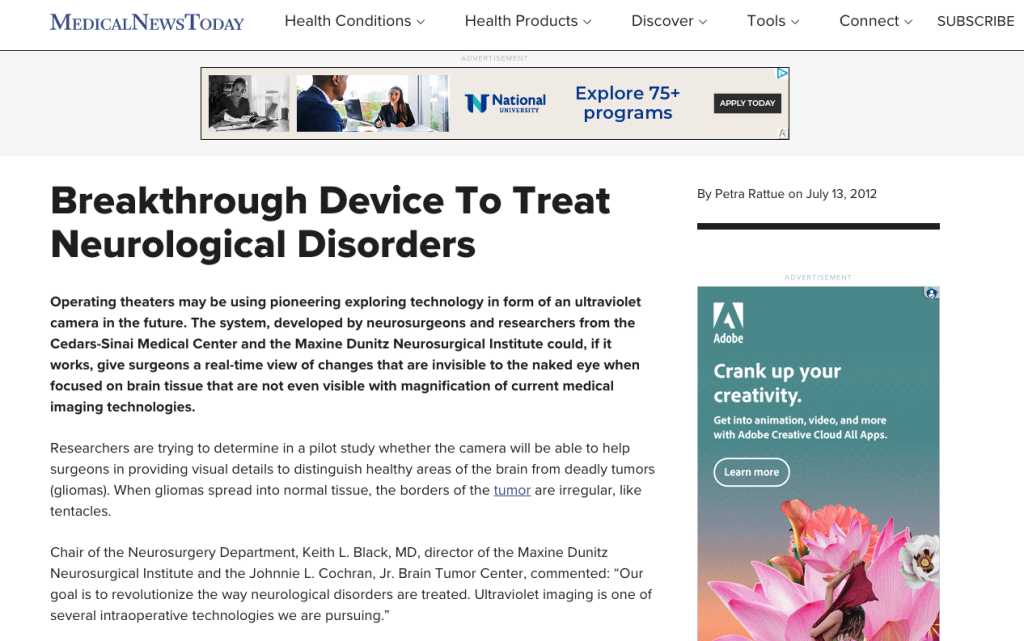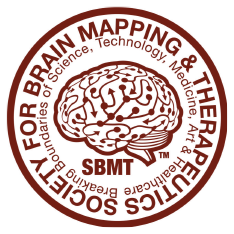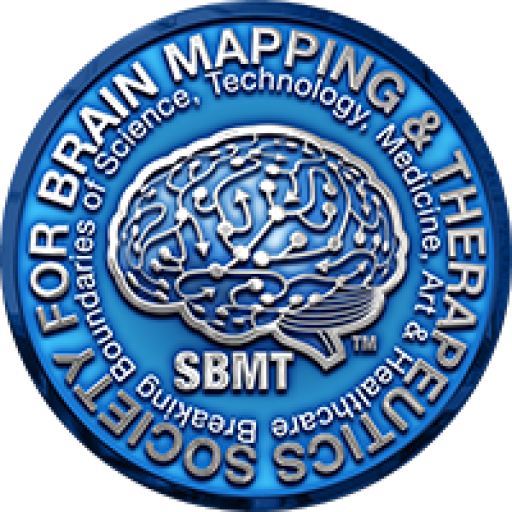
Operating theaters may be using pioneering exploring technology in form of an ultraviolet camera in the future. The system, developed by neurosurgeons and researchers from the Cedars-Sinai Medical Center and the Maxine Dunitz Neurosurgical Institute could, if it works, give surgeons a real-time view of changes that are invisible to the naked eye when focused on brain tissue that are not even visible with magnification of current medical imaging technologies.
Researchers are trying to determine in a pilot study whether the camera will be able to help surgeons in providing visual details to distinguish healthy areas of the brain from deadly tumors (gliomas). When gliomas spread into normal tissue, the borders of the tumor are irregular, like tentacles.
Chair of the Neurosurgery Department, Keith L. Black, MD, director of the Maxine Dunitz Neurosurgical Institute and the Johnnie L. Cochran, Jr. Brain Tumor Center, commented: “Our goal is to revolutionize the way neurological disorders are treated. Ultraviolet imaging is one of several intraoperative technologies we are pursuing.”
The long tentacles of the glioma present neurosurgeons with difficult challenges; if they surgically remove too much normal brain tissue the consequences could be catastrophic, yet not removing enough means that the cancer cells grow back quickly. According to Black, determining the precise line where tumor cells end and healthy cells start is always difficult, even with recent advances in medical imaging systems.
He continued saying that it may be possible that an ultraviolet camera could see below the surface, because tumor cells are more active and need more energy than normal cells, the tumor cells accumulate a NADH, a specific chemical (nicotinamide adenine dinucleotide hydrogenase) that is not visible in healthy cells. The camera, which is on loan from NASA’s Jet Propulsion Laboratory, may capture the ultraviolet light, which is emitted by the NADH and display the area in a high-resolution image.
Leading researcher Ray Chu, MD, a neurosurgeon and his co-principal investigator Babak Kateb, MD, a research scientist at Cedars-Sinai’s Maxine Dunitz Neurosurgical Institute and chairman of the board of the Society for Brain Mapping and Therapeutics, declared: “The ultraviolet imaging technique may provide a ‘metabolic map’ of tumors that could help us differentiate them from normal surrounding brain tissue, providing useful, real-time, intraoperative information.”
Kateb commented:
“This study and equipment-sharing arrangement represents the leading edge of an effort by Cedars-Sinai to develop the next generation of solutions for brain tumors, injuries and other neurological disorders right here at Cedars-Sinai’s Maxine Dunitz Neurosurgical Institute by introducing paradigm-shifting technologies into the field.”
During the clinical trial, the researchers place the highly sensitive camera near the surgical field to record images as the neurosurgeon exposes and removes the tumor. The images will not be used in decision-making or surgical technique. To assess the ultraviolet technology’s efficacy during surgery, the images will be correlated with the appearance of the tumor, laboratory findings, and MRI and CT scans at a later stage.
Written by Petra Rattue




